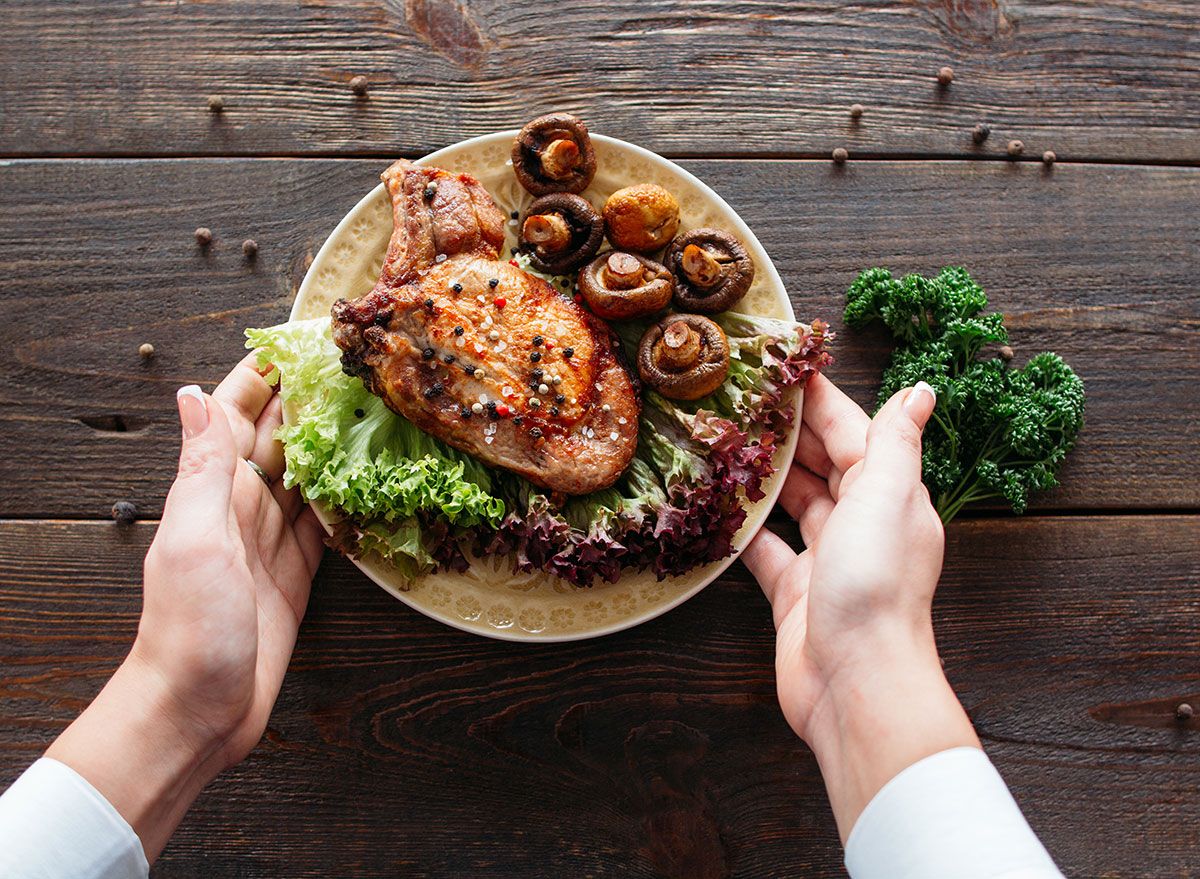
An Expert Tip for Healthier Meals
Asking yourself these three questions is a simple tip that will make any of your meals healthier: Where's my protein, where's my fiber, and where's my healthy fat? Put together a plate that provides all three, and you've got a line on a leaner, healthier body. Eating a slowly absorbed, hunger-controlling meal maximizes the absorption of nutrients in your food. The three macronutrients will also help crowd out refined carbohydrates, saturated fats, added sugars, and other things that block you from reaching your health goals, and here's why.
Protein helps you burn fat in three ways. First, it's the building block of muscle, and muscle burns fat. Second, the very act of eating protein actually burns calories just by digesting the protein itself. And third, protein keeps you fuller longer because that digestive process means your body feels satiated.
If you're eating fiber, you're eating nuts and seeds, fruits and vegetables, beans, and whole grains; foods high in folate, vitamin B12, betaine, resveratrol, and sulforaphane—all critical nutrients. Fiber also allows the bacteria in your gut to produce the fatty acid butyrate, which influences the behavior of genes associated with insulin resistance and inflammation.
The greenest, and most luscious salad in the world isn't as healthy as it could be if you don't add a splash of olive oil to it. The reason: healthy fats help our bodies to process the nutrients in other foods, slow the pace of digestion and improve our cholesterol profile and reduce inflammation. Olive oil, avocados, nuts, chia seeds, flaxseed, and cold-water seafood are all sources of healthy fats. Some healthy fats have an impact on obesity genes and eating a moderate portion of unsaturated fats can ward off the munchies and keep you full by regulating hunger hormones. So if you can look at your plate and find all three of these things—protein, fiber, and healthy fat—you're on the right path to making healthy meals.